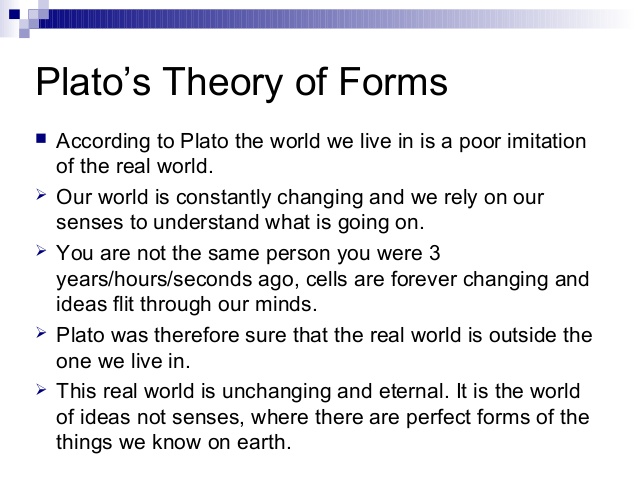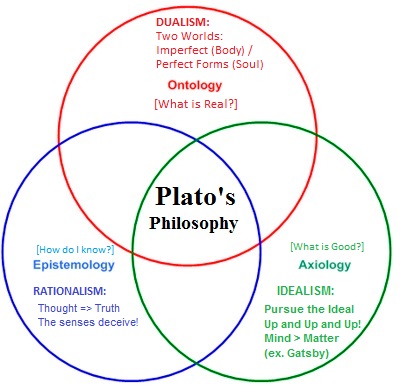Home / Philosophy / The Chair and the Brick
Assignment:
- Using an argument you have recently had with someone, or an argument you recently witnessed, or an argument you've recently seen in a film or televised narrative, assess the two people arguing to determine if their argument are Platonic or Aristotelian.
- Plato: Top ---> down thinking.
- Rationalism
- Reaching up into ideals (the Forms) and understanding abstract concepts and ideas
- Applying those ideals to a situation in the world to see if the situation fits those pre-concieved concepts or ideas.
- Simple example 1: Thinking about what to eat, what taste, texture, and quantity of the type of food and then going out into the world (or the kitchen) to find that food
- Simple example 2: Needing a car, so you think about what you will need and want in a car. Then, you make a paper or mental list of all those things that need to be in the perfect car (perfect within your price range) Once the list is made, you go into the world, or onto the web, and find the car that fits that ideal.
- Aristotle: Bottom ---> up thinking.
- Empiricism
- Surveying what is and assessing what exists in order to draw inferences from the world and formulate an ideal
- Applying that ideal to other aspects of the world to draw conslusions
- Simple example 1: Being hungry, opening the fridge and cabinets, and surveying what is there, what is possible, and drawing the conclusion of what to eat.
- Simple example 2: You need a car, you travel around to car lots, or peruse the web, assessing what is available and what best fits your needs.
- Remember that we all use both ways. The key here is that during arguments, we each tend to lean toward a Platonic argument style or an Aristotelian argument style
The Chair and the Brick
Plato's Forms



Four Key Features of the Forms
- The Forms are not physical items: they are entities that exist somewhere in the center of the universe. Plato uses the concept of beauty to explain this. A flower may be beautiful and a chair may be beautiful. What they have in common is that they both participate in the higher realm in the Form of beauty. The chair also participates in the higher realm of the Form of Chairness, and the flower of Flowerness.
- Particular objects in the physical realm participate in the Forms and are what they are by virtue of this participation.
- The highest form is that of perfect goodness (a combination of Love/Justice. Plato calls this The Good, though in some writings translators call it the Demi-urge or God. (however, the Judeo-Christian concept of God was not known by Plato. All Forms are perfect, and they get their perfection by participating in the Good itself.
- Knowledge of the Forms is acquired through intuitive recollection. We are born with ALL knowledge (participating in the Forms and The Good, but we forget it all at birth. All knowledge is buried deep in our memory and minds, and we can use rational thinking to tap into know.
Chair Videos
Chair Writings
The Brick (Aristotle's Entelechia)

Brick Videos
- Can you find any interesting ones?